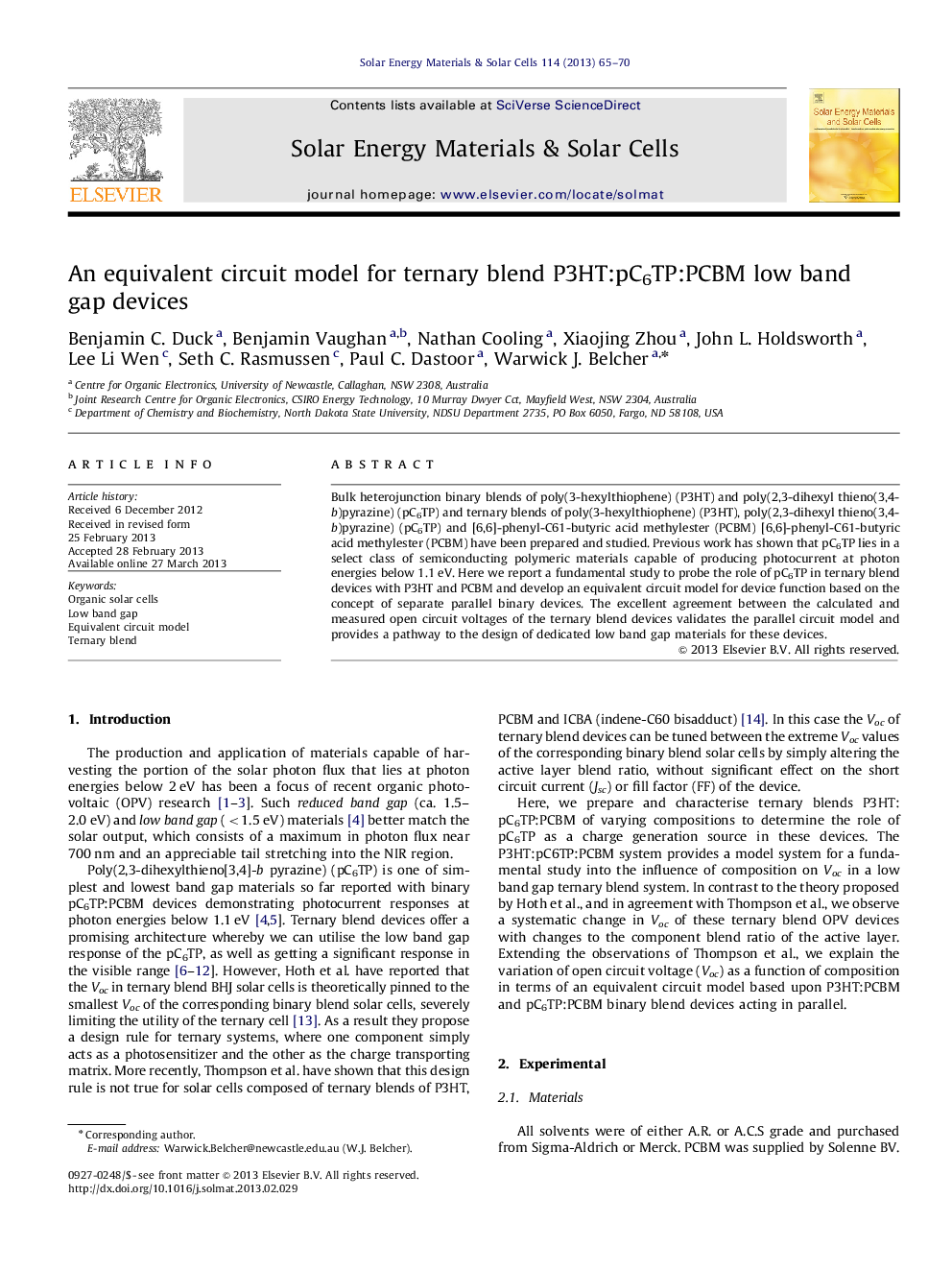| Article ID | Journal | Published Year | Pages | File Type |
|---|---|---|---|---|
| 78492 | Solar Energy Materials and Solar Cells | 2013 | 6 Pages |
Bulk heterojunction binary blends of poly(3-hexylthiophene) (P3HT) and poly(2,3-dihexyl thieno(3,4-b)pyrazine) (pC6TP) and ternary blends of poly(3-hexylthiophene) (P3HT), poly(2,3-dihexyl thieno(3,4-b)pyrazine) (pC6TP) and [6,6]-phenyl-C61-butyric acid methylester (PCBM) [6,6]-phenyl-C61-butyric acid methylester (PCBM) have been prepared and studied. Previous work has shown that pC6TP lies in a select class of semiconducting polymeric materials capable of producing photocurrent at photon energies below 1.1 eV. Here we report a fundamental study to probe the role of pC6TP in ternary blend devices with P3HT and PCBM and develop an equivalent circuit model for device function based on the concept of separate parallel binary devices. The excellent agreement between the calculated and measured open circuit voltages of the ternary blend devices validates the parallel circuit model and provides a pathway to the design of dedicated low band gap materials for these devices.
Graphical abstractFigure optionsDownload full-size imageDownload as PowerPoint slideHighlights► Ternary blend organic PV devices based on pC6TP were fabricated and characterised. ► We propose a parallel circuit model consisting of P3HT:PCBM and pC6TP:PCBM devices. ► Excellent agreement with data is observed assuming PCBM is accessible to both polymers. ► Suggests every donor–acceptor interface acts as an independent voltage source.
